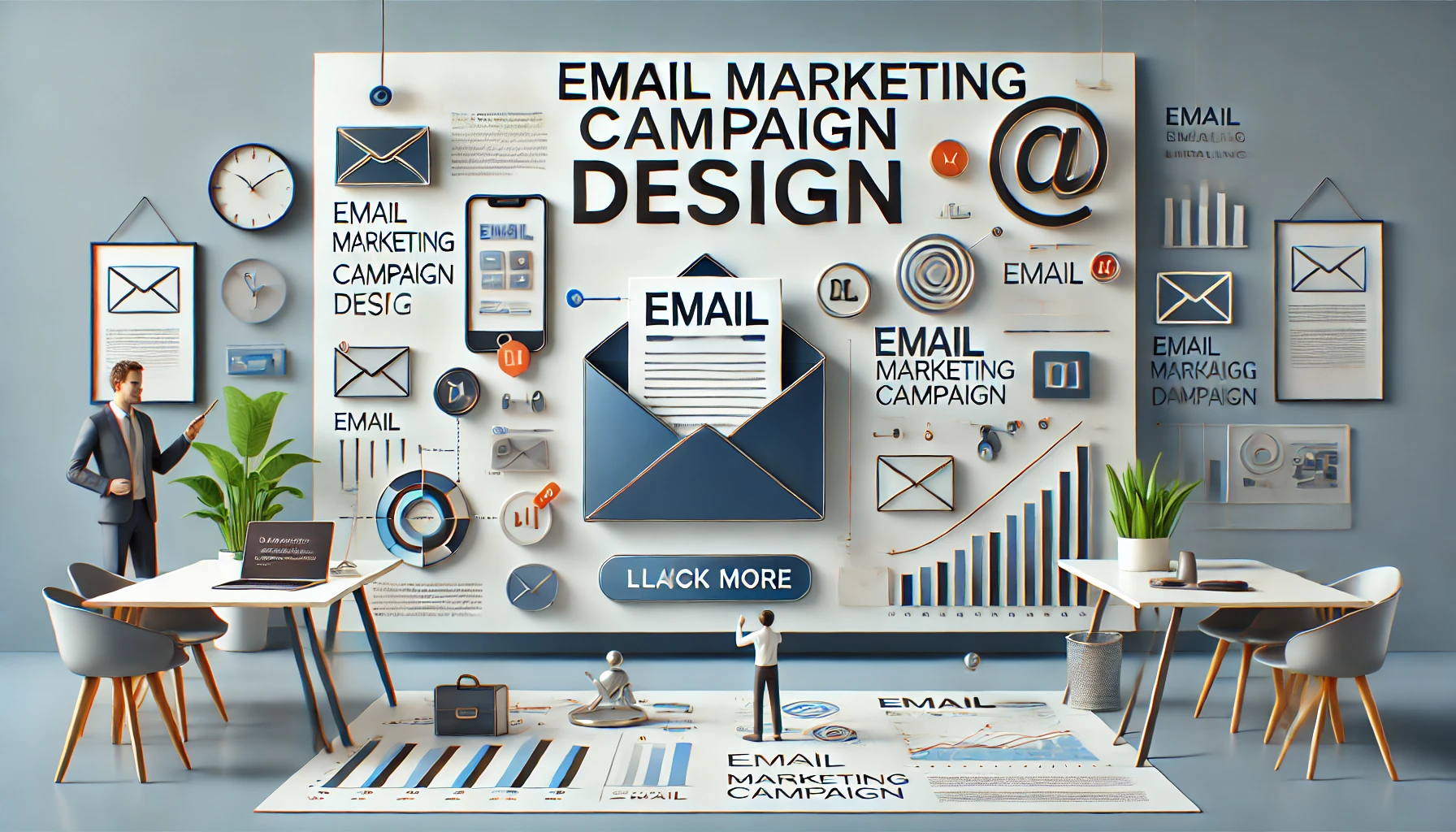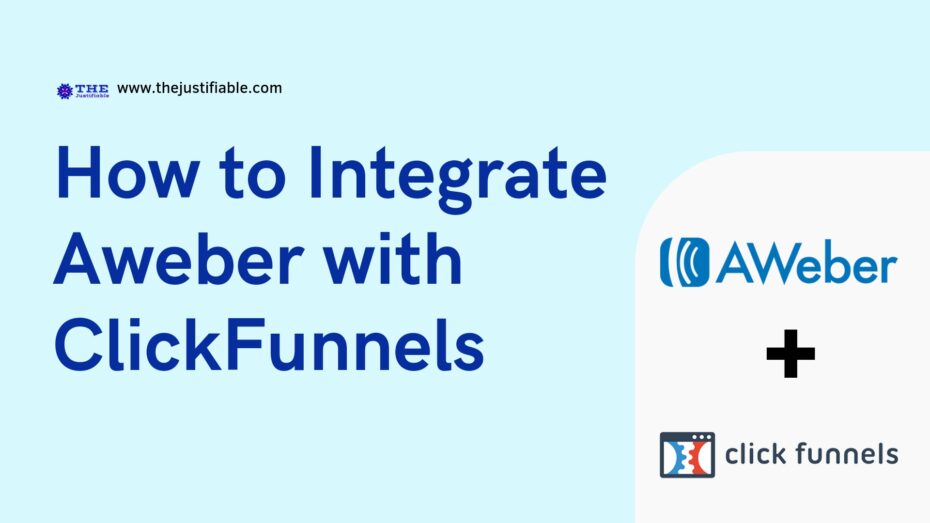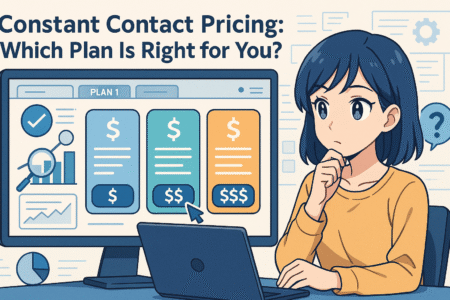Table of Contents
Are you wondering how to design an email marketing campaign that grabs attention, drives engagement, and boosts conversions?
Designing an effective email marketing campaign requires strategic planning, audience targeting, and an understanding of key components that make emails impactful. This guide covers all the essentials to help you master email marketing campaign design for maximum success.
Understanding The Basics Of Email Marketing Campaigns
Grasping the fundamentals of an email marketing campaign is crucial to its success. An email marketing campaign effectively connects businesses with their audience, fostering engagement, loyalty, and sales. Let’s dive into its essential components and benefits.
What Is An Email Marketing Campaign?
An email marketing campaign is a coordinated set of emails sent to a targeted list of subscribers. Each email is crafted with a specific purpose—whether to educate, nurture leads, promote products, or encourage customer loyalty. Successful campaigns are built around strategic objectives that meet business goals.
Email campaigns often involve automated, personalized content, making each message relevant to the recipient’s interests. This personalization enhances engagement, as recipients feel the emails cater directly to their needs. When well-designed, campaigns create valuable, long-term connections between brands and subscribers.
I believe that understanding the structure of an email marketing campaign can improve the flow of messages and optimize results. Each email should serve a purpose that aligns with your goals and subscriber expectations.
Creating campaigns that are visually appealing and easy to read increases effectiveness. The campaign should be visually structured for clarity, with concise messaging, calls to action, and attractive visuals that invite engagement.
Why Use Email Marketing For Your Business?
Email marketing remains one of the most effective channels for reaching audiences directly. Compared to social media, emails offer more control over messaging and timing, letting businesses communicate on a personal level. Direct email access also builds a closer, trust-based relationship.
The ability to segment audiences is a major reason to use email marketing. I suggest using segmentation to target specific demographics or behaviors, as this approach improves relevance and engagement rates. Tailored messaging means subscribers see content that genuinely matters to them.
Email marketing is affordable and delivers a high return on investment (ROI). Automated email tools streamline sending, making campaigns efficient without needing significant resources. Even small businesses can run successful campaigns without a large marketing budget.
This strategy drives website traffic, encouraging customers to revisit your site regularly. Emails can direct readers to blog posts, product pages, or special offers, increasing traffic, conversion, and brand awareness.
Key Benefits Of Effective Email Marketing
Effective email marketing fosters a deeper connection with your audience, keeping your brand top-of-mind. Consistently reaching your subscribers helps build trust and brand loyalty, making your business a preferred choice when they’re ready to purchase.
A strong email marketing strategy brings better audience engagement. Engaging subject lines, targeted content, and interactive elements, like polls or feedback forms, encourage more active participation. Engaged subscribers are more likely to convert.
Another benefit is measurable performance, allowing you to track and adjust campaigns as needed. I recommend regularly reviewing metrics like open and click-through rates to understand what resonates. Adjusting strategies improves long-term results and ROI.
Email marketing offers incredible versatility. Campaigns can promote a new product, educate readers, or nurture leads, allowing you to meet different goals at different stages of your business. This adaptability ensures your campaigns stay relevant to your brand’s needs.
Setting Clear Objectives For Your Campaign
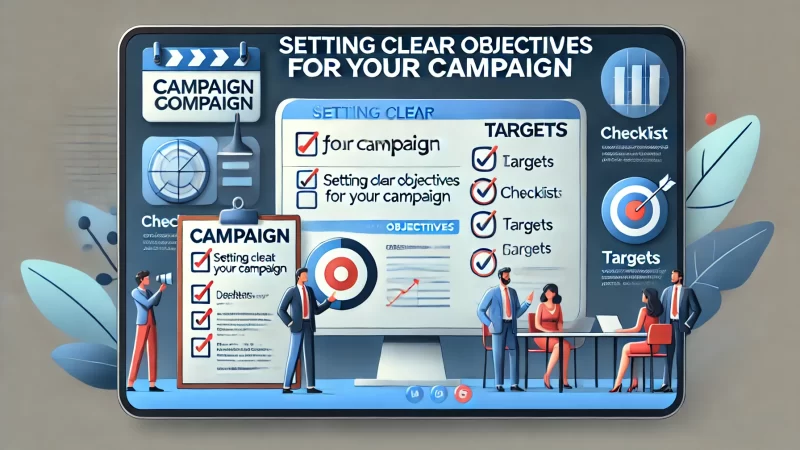
Clear objectives are the foundation of a successful email marketing campaign. Defining specific, measurable goals helps guide your strategy and ensures your campaign aligns with your business needs. Let’s explore key ways to set effective campaign objectives.
Defining Your Campaign Goals
Campaign goals should be specific, measurable, achievable, relevant, and time-bound (SMART). Setting clear goals allows you to tailor messages that directly speak to what you want to achieve, whether it’s boosting engagement, generating leads, or increasing sales.
Goals provide direction and purpose. I suggest focusing on what matters most to your business and your audience. For instance, if you aim to drive more traffic, create emails with links and strong calls to action that encourage clicks.
Aligning goals with key performance indicators (KPIs) gives you a way to measure progress. Tracking KPIs helps determine whether your goals are achievable within your timeline and lets you adjust if needed.
Successful goal-setting also means understanding your resources. Consider time, budget, and technology availability, and choose goals that align with these factors to maximize efficiency and effectiveness.
Aligning Goals With Audience Needs
Aligning campaign goals with audience needs makes your emails more relevant and appealing. By addressing what your audience values most, you increase engagement and build trust. Knowing your audience’s pain points lets you craft messages that truly resonate.
Audience research is essential for alignment. I recommend gathering insights through surveys or feedback forms, as they can reveal specific needs or interests. Use this information to guide your email topics, offers, and timing.
Crafting content that speaks directly to subscribers’ goals can improve open and conversion rates. For example, if subscribers are interested in educational content, create helpful guides or tips to address those needs.
As you develop your campaign, continuously refine your understanding of audience needs. A dynamic approach to goal alignment keeps your campaigns relevant and effective, adapting to changing audience interests over time.
Examples Of Successful Campaign Objectives
Successful email campaigns often focus on measurable, audience-centered objectives. Examples include improving engagement by 20%, increasing website traffic by 15%, or generating 100 new leads within a month. Each target is specific, quantifiable, and aligned with business needs.
Setting benchmarks makes it easier to gauge success. I suggest analyzing past performance to establish achievable yet challenging objectives. For example, if your average click-through rate is 10%, aim for a 12% increase with optimized content.
Another effective objective is reducing cart abandonment. This goal focuses on recapturing potential customers who left items in their cart, which can increase conversions. Crafting targeted follow-up emails reminds them of their purchase intent.
Objectives focusing on customer retention, like improving loyalty program sign-ups, are valuable for long-term growth. Engaging existing customers is often more cost-effective than acquiring new ones, making retention-focused campaigns a powerful strategy.
Building Your Target Audience List
Building a targeted audience list is essential for effective email marketing. A well-curated list ensures that your messages reach people who are most likely to engage with your content. Here’s how to identify, segment, and grow your audience.
Identifying Your Ideal Audience
Identifying your ideal audience involves understanding the demographics, interests, and behaviors of your best customers. Knowing these factors helps create messages that are meaningful and relevant to the people you want to reach.
I recommend starting with customer profiles, as they provide insights into who your content should target. Look at age, location, interests, and purchasing habits to tailor campaigns that appeal directly to your core audience.
Customer research tools, like surveys or analytics, can uncover deeper preferences. I find that using these tools helps refine targeting strategies, ensuring that your emails speak to your audience’s specific needs and pain points.
Once you know your ideal audience, ensure that your content, tone, and offers reflect what they value most. Creating campaigns that mirror their interests increases the chances of engagement and loyalty.
Segmenting Your Email List For Precision
Segmenting your email list allows you to send more targeted messages to different subscriber groups. By dividing your list based on criteria like location, behavior, or purchase history, you can increase relevance and engagement across your campaigns.
Behavioral segmentation is effective for targeting based on past actions, like previous purchases or engagement level. This helps you tailor emails, such as re-engagement offers for inactive subscribers or product suggestions for loyal customers.
Demographic segmentation targets subscribers based on age, gender, or other static factors. If you know certain demographics respond better to specific products, segmenting by demographic allows you to personalize the message more effectively.
Interest-based segmentation, informed by subscriber behavior or explicit preferences, is another powerful approach. If subscribers have shown interest in a particular topic, sending relevant content increases engagement and builds subscriber trust.
Techniques For Growing Your Email List
Growing your email list requires a combination of strategies to attract quality subscribers. These techniques help you expand your list with people who are genuinely interested in your content and likely to engage with future campaigns.
Offering valuable incentives, like free resources or discounts, can entice visitors to subscribe. I suggest creating lead magnets tailored to your audience’s needs to maximize conversions and attract relevant subscribers.
Utilizing social media and blog content is another effective method. Promoting sign-ups on these channels brings in people who already show interest in your brand. Crafting compelling calls-to-action on blog posts and social platforms helps grow your list.
Hosting webinars or live events can attract subscribers interested in your expertise. Promoting these events requires an email address for registration, adding qualified leads who have demonstrated interest in your topic.
Using targeted landing pages specifically for email sign-ups is a great way to capture interest. Tailor each landing page to a unique offer or audience segment for higher conversion rates and list quality.
Crafting Compelling Email Content
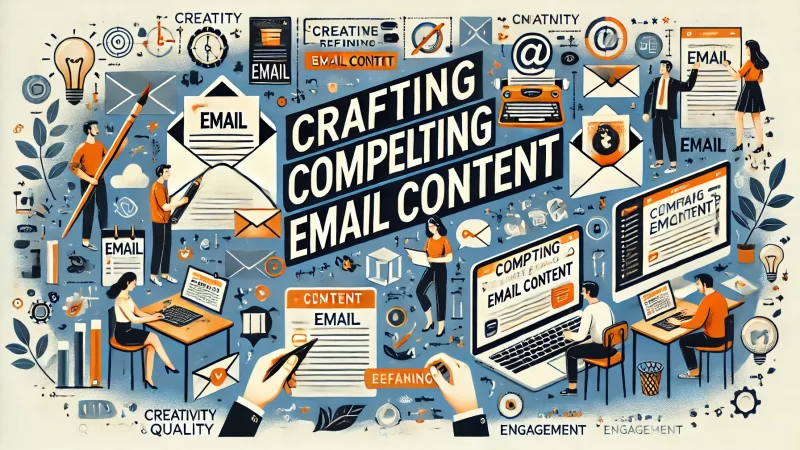
Crafting compelling email content is essential for creating an effective email marketing campaign. Each email needs captivating subject lines, engaging content, and clear calls-to-action to keep readers interested and encourage action. Let’s dive into these elements.
Writing Captivating Subject Lines
A captivating subject line is your first chance to grab the reader’s attention. It should be intriguing, informative, and brief. I suggest including personalization elements or action words that prompt curiosity, encouraging subscribers to open the email.
Testing different styles can reveal what resonates most with your audience. For example, using questions, emojis, or scarcity phrases can increase open rates. Aim to create subject lines that align with your campaign’s goals, keeping them focused and relevant.
Be mindful of word count and readability. Subject lines with fewer than 50 characters tend to perform best, as they’re easier to read on mobile. Experiment with different formats, such as benefits-driven or curiosity-inducing lines, to see what works best.
A/B testing is a powerful way to refine subject lines. I recommend testing variations with a small audience segment before sending the winner to your full list. This method helps increase effectiveness and ensures better campaign results.
Creating Engaging And Relevant Content
Engaging content speaks directly to your audience’s needs and interests. Your email body should offer value, whether it’s insights, solutions, or product highlights. I believe understanding your audience allows you to create content they truly appreciate.
Focus on clarity and relevance. Avoid unnecessary jargon, and keep paragraphs short to improve readability. Address your readers directly, as if you’re speaking to a friend, to make the message feel personal and relatable.
Storytelling can enhance engagement by adding personality to your emails. Share relatable experiences or customer success stories that align with the email’s theme. Story-driven emails create a stronger connection and increase readers’ emotional investment.
I suggest using segmentation to deliver content that aligns with subscriber interests. Tailoring emails to their preferences not only boosts engagement but also builds trust, as subscribers feel understood and valued by your brand.
Using Visuals To Enhance Engagement
Visuals can elevate your email’s appeal and effectiveness. Images, GIFs, or icons break up text, making content more enjoyable to read. I recommend using visuals that align with your brand and message, adding clarity and interest to your emails.
Keep images optimized for fast loading times. Large files can slow load speeds, frustrating readers and reducing engagement. Compressed visuals or icons retain quality while ensuring emails load smoothly on any device.
Incorporate images that support your message. For example, product images or infographics clarify your points and make them memorable. Visual elements should complement, not overwhelm, your email’s core message.
Visual consistency is key. Stick to a similar style, color scheme, and layout across all emails. This strengthens brand recognition and makes your emails feel polished and professional, enhancing the reader’s experience.
Adding Clear Calls-To-Action (CTAs)
A clear call-to-action (CTA) directs readers to the next step. Each email should have one or two concise, compelling CTAs, whether it’s to “Shop Now,” “Learn More,” or “Sign Up.” I suggest using action words that encourage immediate response.
Positioning matters. Place the main CTA in a noticeable spot, such as above the fold, to make it easily accessible. Repeating it later in the email can remind readers of the action without feeling pushy.
Make your CTAs visually distinct. Use buttons or contrasting colors to make them stand out from the rest of the text. I recommend ensuring the CTA button is large enough to tap easily on mobile devices.
A/B testing can also optimize CTA performance. Experiment with different text, colors, or placement to see which version drives more clicks. Adjusting your CTA strategy based on these insights can significantly improve campaign results.
Designing The Email Layout And Structure
Designing an effective email layout enhances readability and engagement. An organized, user-friendly layout guides readers naturally through the content, making it easy for them to understand and act on your message. Let’s explore key layout design strategies.
Choosing The Right Email Template
The right template supports the purpose and tone of your email. A simple, clean design often works best, as it keeps the focus on the content. I suggest choosing templates that fit your brand and adapt well to different types of messages.
Responsive templates ensure a consistent look on all devices. With many users reading emails on mobile, I recommend prioritizing mobile-friendly designs. This improves the experience for all subscribers and boosts engagement rates.
Templates should have flexibility for customization. Consider designs that let you add or remove sections easily, adapting to your specific campaign needs without overwhelming the reader. A streamlined template makes for a more enjoyable experience.
Visual hierarchy is essential. Structure the template so that the most important information is at the top. This layout guides readers naturally, helping them absorb key points before diving into details.
Structuring Content For Readability
A well-structured email is easy to read and visually appealing. Short paragraphs, bullet points, and whitespace improve readability and make it simpler for readers to scan content quickly. I recommend using these elements strategically for maximum impact.
Subheadings guide readers through different sections of the email, making content feel organized. Clear subheadings break up text, allowing readers to locate relevant information easily. Each section should be distinct, flowing naturally to the next.
Use bold text to emphasize key points, helping readers focus on essential information. I suggest highlighting no more than one or two points per paragraph, so the emphasis doesn’t feel overwhelming or distracting.
Whitespace is your friend. Avoid cluttered designs by spacing out elements and keeping visuals balanced. This simple approach enhances readability and makes the email feel lighter and more inviting.
Optimizing Design For Mobile Devices
Mobile optimization is critical, as many subscribers check emails on their phones. A mobile-friendly design improves user experience and increases engagement. I recommend previewing each email on different devices to ensure the layout adapts seamlessly.
Text should be large enough to read comfortably without zooming. Choose font sizes that work well on small screens, keeping your design user-friendly. Headers and CTAs should be prominent and easy to tap on any device.
Single-column layouts work best on mobile. They prevent readers from having to scroll sideways, creating a smooth experience. Multi-column layouts may work on desktops, but single columns are more practical for mobile viewing.
Avoid heavy images, as they can slow loading times on mobile. Optimized images make emails faster and easier to view, enhancing the experience and preventing readers from dropping off due to slow loading.
Utilizing Brand Elements For Consistency
Consistent branding reinforces recognition and builds trust with readers. I advise using brand colors, logos, and fonts that match your website and social channels. This creates a seamless experience, helping readers instantly recognize your brand.
Brand voice is just as important as visuals. Maintain a consistent tone across emails, whether it’s friendly, professional, or playful, to build familiarity and trust. Your voice helps convey your brand’s personality in each message.
Use brand visuals sparingly to avoid clutter. Logos, color blocks, and branded fonts should be present but not overpowering. Subtle touches make emails professional and aligned with your brand without being overwhelming.
Regularly update your branding as needed. If you refresh your brand, ensure your email design reflects these changes, so all touchpoints stay consistent. Consistency in branding is key to a cohesive and memorable reader experience.
Testing And Optimizing Your Campaign
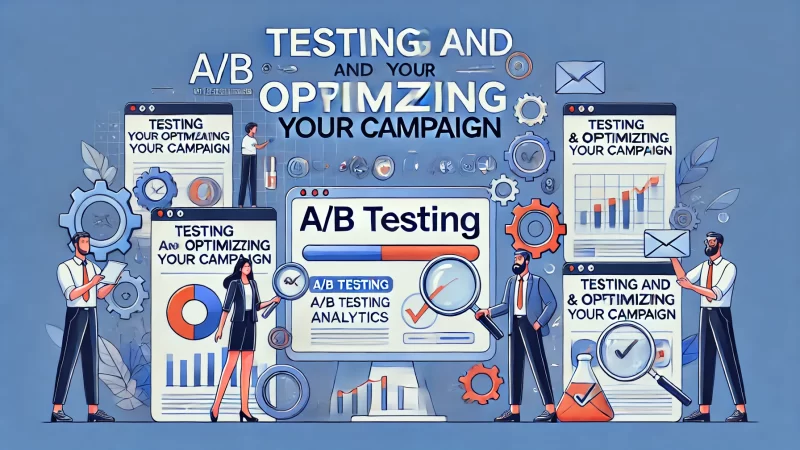
Testing and optimizing your email marketing campaign enhances effectiveness and maximizes results. Through methods like A/B testing and deliverability checks, you can refine your strategy to improve engagement and reach more subscribers effectively.
A/B Testing For Better Results
A/B testing involves comparing two versions of an email to see which performs better. I recommend testing elements like subject lines, CTA placements, or email design to determine what resonates best with your audience.
Start with small tests, focusing on one element at a time. Testing a single variable, like a headline or button color, provides clear insights into what boosts engagement. This method keeps results specific and actionable.
Analyze results after each test. Look at metrics such as open rates or click-through rates to see which version your audience preferred. Regular testing fine-tunes your campaign, ensuring content aligns closely with reader interests.
Testing frequencies matter, too. Running frequent A/B tests keeps your campaign fresh and adaptive, allowing you to respond to changing audience behaviors. It’s a great way to stay agile and continually improve your strategy.
Checking For Deliverability And Spam Filters
Deliverability ensures your emails reach subscribers’ inboxes. I suggest monitoring for any deliverability issues and addressing them promptly, as this boosts the effectiveness of your email marketing campaign.
Use authentication methods like DKIM and SPF to improve deliverability. These protocols help prove your emails are legitimate, reducing the chances they’ll be marked as spam. High deliverability translates to better reach and impact.
Monitoring sender reputation is also essential. Low reputation scores can lead to emails landing in spam folders. Maintain a good reputation by following best practices, like avoiding spammy language and regularly cleaning your list.
Content quality affects deliverability, too. Avoid excessive punctuation or promotional jargon that triggers spam filters. I advise writing in a clear, trustworthy tone to ensure your messages reach your audience without interference.
Analyzing Metrics For Optimization
Metrics provide essential insights for campaign optimization. I recommend reviewing open rates, click-through rates, and conversion rates regularly to understand what’s working and what needs improvement in your email marketing strategy.
Open rates show whether your subject lines are appealing. A low open rate suggests a need for more captivating subject lines or better audience targeting. Use these insights to refine your approach and increase engagement.
Click-through rates (CTR) highlight the effectiveness of your CTAs and content. If CTR is low, consider revising your CTA wording or positioning. Strong CTAs guide readers effectively, encouraging them to take the desired action.
Conversion rates measure the campaign’s success in achieving its goals, like sales or sign-ups. Low conversion rates may indicate issues in the email’s content or landing page. Optimizing both can significantly improve overall performance.
Scheduling And Automating Your Campaign
Scheduling and automating your campaign allows for efficient management and timely delivery. Automated workflows keep your email marketing consistent and help you reach subscribers at optimal times, boosting engagement and conversions.
Deciding On The Right Time To Send
Choosing the right send time can impact your campaign’s success. I recommend testing different days and times to find when your audience is most active and likely to engage with your emails.
Weekday mornings often show higher engagement, as people check emails during work hours. However, this can vary by audience type. Testing different times is the best way to discover your audience’s preferences.
Consider your audience’s time zones, too. Segmenting by location ensures emails land in inboxes at ideal local times, increasing the chances of them being read and acted upon.
Special events or holidays can affect send timing as well. Adjusting your schedule to align with these dates shows awareness of your audience’s activities, boosting the relevance and impact of your campaign.
Setting Up Automation For Campaign Efficiency
Automation simplifies repetitive tasks, allowing you to focus on strategic improvements. I suggest setting up workflows for welcome emails, follow-ups, and cart abandonment reminders to create seamless, efficient communication.
Automated welcome emails engage new subscribers immediately, making a great first impression. These messages build rapport and introduce readers to your brand’s value, fostering loyalty from the beginning.
Drip campaigns nurture leads over time, gradually guiding them through the customer journey. Each email in the series should deliver valuable information, building trust and encouraging conversions.
Automated re-engagement emails can revive inactive subscribers, keeping your list fresh. Offering incentives or reminding them of your brand’s value can re-capture interest, enhancing list quality and engagement rates.
Monitoring Automated Campaign Performance
Monitoring performance ensures that automation workflows are effective. Regularly check metrics like open rates and conversion rates for each automated email to identify any areas for improvement.
Look for patterns in subscriber behavior, such as increased clicks on specific content types. These insights help refine your messages, ensuring each email in your automation sequence stays relevant and engaging.
Adjust underperforming emails. If certain emails have low engagement, try modifying the content, subject line, or CTA. Small tweaks can enhance effectiveness, optimizing the overall performance of your automated sequence.
I recommend testing your automation workflows periodically. Re-running successful sequences or adjusting messaging based on recent data keeps your campaigns fresh, responsive, and aligned with current audience preferences.
Measuring And Analyzing Campaign Success

Measuring and analyzing campaign success provides valuable insights for future improvements. By tracking key metrics, you can evaluate your campaign’s effectiveness and make data-driven adjustments to optimize performance.
Tracking Key Performance Indicators (KPIs)
Key performance indicators (KPIs) reveal how well your campaign meets its goals. I suggest tracking metrics like open rates, click-through rates, and conversion rates, as these provide a clear view of your campaign’s impact.
Open rates reflect the appeal of your subject lines. A higher open rate indicates that your audience finds your topics interesting, while a low rate may signal a need for subject line optimization or audience targeting refinement.
Click-through rates show how effective your content and CTAs are. Monitoring this metric can indicate whether your message is resonating. Higher CTRs suggest readers find the content engaging and are willing to take the next step.
Conversion rates measure your campaign’s success in driving the desired actions, like purchases or sign-ups. Tracking conversions helps you understand which emails effectively guide readers toward your goal, providing a benchmark for future campaigns.
Understanding Open And Click-Through Rates
Open and click-through rates are essential for gauging reader engagement. I recommend paying close attention to these metrics, as they reveal how well your emails are performing and whether your audience finds them valuable.
Open rates indicate how enticing your subject lines are. If open rates are low, consider revising your subject line strategy to make them more compelling or personalized. This small change can lead to a significant engagement boost.
Click-through rates show which parts of your content attract the most interest. A high CTR suggests that your email’s CTAs or links resonate well with readers, encouraging them to explore your offerings or content further.
Analyze patterns in both metrics to spot trends. For example, if open rates spike on certain topics, explore similar themes in future campaigns. These insights refine your strategy, ensuring content aligns with reader preferences.
Adjusting Future Campaigns Based On Insights
Insights from campaign metrics guide improvements. I suggest using data to shape future campaigns, refining content, timing, and segmentation for better results. Tracking past performance helps tailor your strategy to meet evolving audience needs.
Review what worked well and what didn’t. I recommend doubling down on successful elements, like high-engagement topics or effective CTAs, while adjusting less popular aspects. This approach ensures your campaigns remain relevant and impactful.
Audience feedback is invaluable. If possible, gather direct feedback through surveys or comment sections to understand what readers liked or disliked. This feedback enhances your strategy, creating content that resonates deeply with subscribers.
Experiment with new tactics based on insights. Testing different approaches keeps your emails fresh and engaging. Continually refining your campaigns based on past performance optimizes your strategy, delivering better outcomes over time.


